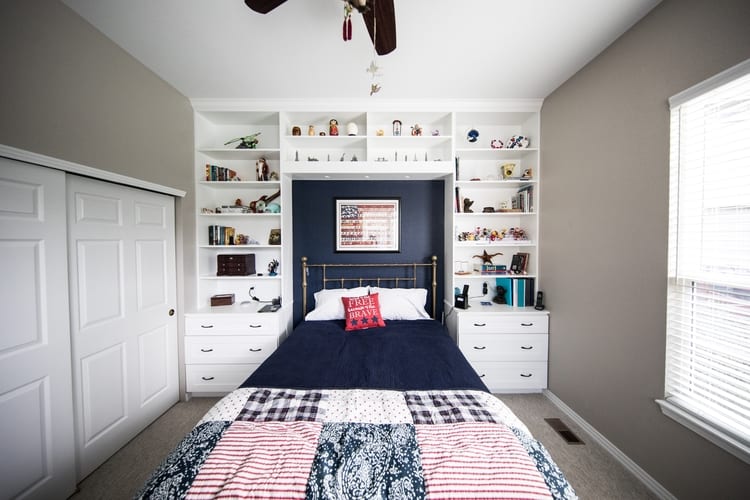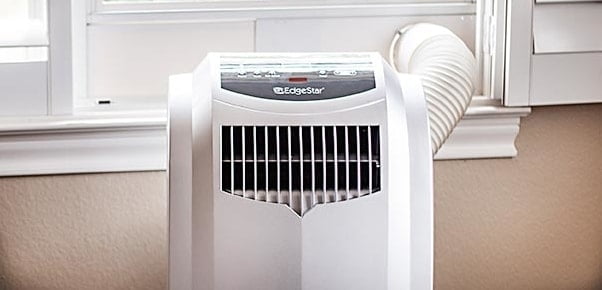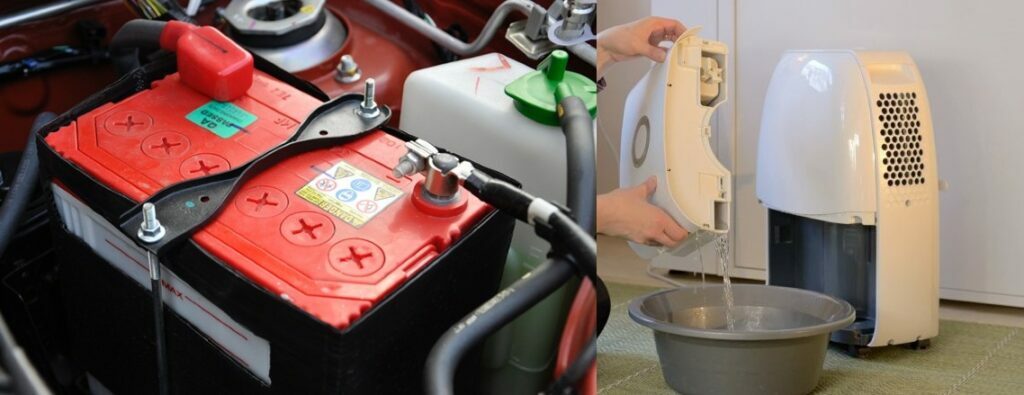Last Updated on January 1, 2024
Selecting accurately sized dehumidifier is very important for effective removal of humidity, to protect you, your home and your appliances. A less powerful dehumidifier will be insufficient for removing required amount of moisture from the environment. But what about a dehumidifier that is bigger and larger for a required space. Can a dehumidifier be really too big?
Generally, a dehumidifier too large for a room will lead to higher electricity consumption, more noise, and more dryness. However, you could bypass many of these side effects if it can automatically shut down after performing the required dehumidification.
Well, that was the short answer. But let’s find out will it really be better, particularly for you. I have written this article specifically covering this query, so that in the end you can come to the conclusion, either it will improve functionality, effectiveness and efficiency or reduce it.
How To Evaluate Required Dehumidifier Capacity for Your Space?
Dehumidifiers are sized based upon the amount of humidity they extract from the environment over the period of 24 hours. This quantity of water is measured in pints.
For example, if your dehumidifier is 50 pints, this means it will extract 50 pints (23.6 liters) of water in 24 hours.
Note: Previously this testing was performed with temperature of 60°F and relative humidity 80%. These standards were updated in 2020, temperature 65°F and relative humidity 60%, to reflect realistic environmental conditions.
Choosing right size for your room is easy. Simply go through the steps below and you will end up with the right capacity of dehumidifier you need:
- Make a rough estimate of average relative humidity in the space where you need to use your dehumidifier. Having problem estimating, these indicators below will help give you an idea:
- Air feels a little heavy (50-60% RH)
- Musty and moldy smell now and then (60-70% RH)
- Walls and floors have wet stains (70-80% RH)
- Water seepage with apparent mold (80-100% RH)
- You can also use a hygrometer for measuring humidity. By the way, RH above stands for Relative Humidity.
- Check temperature of the room where your dehumidifier will operate. Make sure it is above 60°F. Actually, if you run it below this limit of temperature, it may result in frosting of dehumidifier coils.
Frosting will cause your dehumidifier to intermittently shut OFF and ON and keep filling it quickly, even when dehumidifier is off. - Finally, for the area of the space in your home that you want to dehumidify and estimated relative humidity there, use the table below from AHAM (Association of Home Appliance Manufacturers) to determine required dehumidifier capacity for your needs.
| Relative Humidity | 300 sq ft space | 500 sq ft space | 800 sq ft space | 1,200 sq ft space |
| 50-60% | 30 Pint (Old Standard) 20 Pint (New Standard) | 45 Pint (Old Standard) 30 Pint (New Standard) | 60 Pint (Old Standard) 40 Pint (New Standard) | 70 Pint (Old Standard) 50 Pint (New Standard) |
| 60-70% | 30 Pint (Old Standard) 20 Pint (New Standard) | 45 Pint (Old Standard) 30 Pint (New Standard) | 60 Pint (Old Standard) 40 Pint (New Standard) | 70 Pint (Old Standard) 50 Pint (New Standard) |
| 70-80% | 40 Pint (Old Standard) 25 Pint (New Standard) | 50 Pint (Old Standard) 30 Pint (New Standard) | 65 Pint (Old Standard) 45 Pint (New Standard) | 80 Pint (Old Standard) 55 Pint (New Standard) |
| 80-100% | 45 Pint (Old Standard) 30 Pint (New Standard) | 60 Pint (Old Standard) 40 Pint (New Standard) | 70 Pint (Old Standard) 50 Pint (New Standard) | 90 Pint (Old Standard) 60 Pint (New Standard) |
Problems with Dehumidifier Too Large-Sized for A Room
Generally, it is a good idea to buy a dehumidifier that is a little larger than the requirement. Problems may only arise if the size of your unit is prominently higher than normal or recommended.
If your dehumidifier is a lot bigger than the recommend size, according to the table above, it may increase effectiveness, efficiency and convenience or reduce it.

These are the variables that decide the impact of a large sized dehumidifier:
- Extent of drop in relative humidity you need
- Automaticity of dehumidifier operation
- Mobility of dehumidifier
- Time duration of dehumidifier operation
I will discuss how these variables affect dehumidifier operation and what kind of impact they will have on various desirable and undesirable aspects of it.
1. Higher Electricity Consumption
By intuition, a dehumidifier with larger capacity should use more electricity compared to normal sized dehumidifier. However, this is not necessarily true. In fact, usually by using a bigger dehumidifier you will actually reduce power intake.
Well, how is that? Dehumidifier turn Off after desired humidity is achieved in a space. If you have a higher capacity dehumidifier than required, it will complete required dehumidification quicker, turn OFF early and save you power.
But there is a catch. There are two scenarios in which larger capacity dehumidifier would actually have a higher electricity consumption.
- If you don’t have an automated dehumidifier and you can only select the level of operation (high, medium, low), or humidistat is faulty. Your dehumidifier will constantly run without turning off quicker and for the same duration of time it will use more power.
- Very low or practically unattainable value of relative humidity, or let’s say in case of water damage or flooded basement, will cause your dehumidifier to never turn Off. This will spike electric power usage in comparison to normal-sized dehumidifier.
2. More Noise Made By Dehumidifier
A refrigerant dehumidifier has mainly two moving components: compressor and fan. When dehumidifier is running, most of the sound among these two is generated by fan operation.

With a bigger dehumidifier, fan will need to run at lower capacity to perform required dehumidification. This means increased size may actually reduce noise from your dehumidifier.
Quicker operation also means that fan will turn off quicker. Thereby, noise will stay for a smaller time with less intensity.
Note: In case your dehumidifier does not have humidity control and automated fan speed control, it will generate louder noise and run for same duration of time compared to normal-sized dehumidifier.
The solution is to manually adjust fan speed considering oversizing of dehumidifier compared to space.
3. Excessive Dryness If Dehumidifier Lacks Automation

This again will be a problem with manual constant operation dehumidifier lacking humidity control and automation. Dehumidifier will keep functioning regardless of the desired relative humidity and cause excessive dryness.
4. More Weight and Space Requirements
Generally, a larger capacity dehumidifier will have more weight and cover more space. This will be a problem for smaller rooms mainly. By increased weight, most of the inconvenience would be in mobility.
If you are using same dehumidifier for more than one location in your home, a bigger dehumidifier would make movability difficult.
5. More Heat For The Same Running Time
Most dehumidifiers extract humidity from the air by cooling it at low temperatures. Theoretically, the same amount of heat is added to the dehumidified air before it comes out of the dehumidifier.
However, practically there is a little addition of heat in the room. Higher capacity means more heat generated by the dehumidifier compared to a lower capacity unit, if both run for the same interval of time.
Normally, I wouldn’t worry if a dehumidifier is a little large-sized for a space. However, if the dehumidifier is fairly big for the room and it is run for extended intervals of time, your AC may have to work overtime to bring about the required cooling.
Should You Avoid Using Large-Sized Dehumidifier?
As I said earlier, you may use a dehumidifier of larger capacity than required, in fact, it may be even better. But when the size is a lot bigger for a space, that is when you should take into account other factors.
I recommend that you go through factors I discussed earlier to realize either an oversized unit will improve dehumidification, efficiency and ease for you or reduce it.
Sometimes a large-sized dehumidifier becomes a blessing when you have too high humidity levels in your living space. By this, I do not mean seasonal spikes in the monsoon. I mean the localized high humidity spots due to water damage, pipe leakages, water seepage, laundry etc.
In other cases, a large-sized dehumidifier may short cycle causing higher electricity usage and higher noise. On top of that, if the unit does not have humidity control, it will lead to excessive dryness that is bad for you, your home, and your appliances and furniture.
How To Make a Big Dehumidifier Work for You? (Useful Hack)
Let’s say you do have a dehumidifier unit that is much bigger than needed for your room. Is there a way to make it work? Yes, there is.
Firstly, if you have mistakenly bought an oversized unit, why not try returning it or replacing it? This would be the best course of action.
However, if you can’t, there is a hack to effectively use that oversized dehumidifier unit.
On top of that, this hack will also allow you to bypass problems of relatively large dehumidifiers, like short cycling, higher electricity consumption, too much dryness, noise, etc.
Ok, hear me out…
All you have to do is reduce the dehumidification of your dehumidifier. If you can’t reduce the size of the unit, you could always reduce its power.
To do that reduce the blower fan speed of your dehumidifier unit. This will reduce the amount of air that comes in contact will cooling coils per unit time and you will have more controlled dehumidification overall.
The result would be delayed and slower operation that prevents short cycling and consequently lower energy consumption.
Moreover, your dehumidifier will make less noise, as its fan is running at a lower speed. The sound from the compressor will also be lower due to its reduced overall working.
You would also resolve the problem of too much dryness in too little time due to suitably less airflow through your dehumidifier unit.
Pro Tip: If you are unaware of the relative humidity you need, select between 30-50%, as this is the suitable range given by most experts. From my experience, I recommend you pick a value between 40-50% in the humidistat for the most comfortable environment.
Be Careful About Old and New Standards of Dehumidifier Capacity
Pint capacity refers to the amount of water content that is extracted by the dehumidifier in the time of 24 hours.
If you notice in the table above, there are two dehumidifier capacities (based on pints) for every room size and range of relative humidity.
The reason for that is the changed DOE standards for dehumidifier units.
Old standard declared in 2012 required the dehumidifier to be tested at 80 °F temperature and 60% relative humidity.
New standard proposed by DOE required dehumidifiers to be tested at 65 °F temperature and 60% relative humidity.
So if you measure pint capacity by the new standard, it will be slightly less.
This means that you can have a dehumidifier that follows the 2012 standard and has a higher capacity but less dehumidification than a unit you just bought and follows newer standards.
There is nothing wrong with the older unit. It’s just that it follows the older standard for recording pint capacity.
For example, this 1500 sq ft Midea Dehumidifier, which I really like due to its low noise levels, has a pint capacity of 30 pints according to 2012 standards and 22 pints according to 2019 standards.
Here’s an easy estimation, in case you would like to compare dehumidifiers based on old standard with new ones.
| Area Covered by Dehumidifier | Pint Capacity by Old Standards | Pint Capacity by New Standards |
| 400 sq ft. | 30 | 20 |
| 600 sq ft. | 40 | 25 |
| 800 sq ft. | 50 | 30 |
| 1000 sq ft. | 60 | 35-40 |
| 1200 sq ft. | 70 | 45-50 |
| 1500 sq ft. | 90 | 55-60 |
Simple Hack to Know If You Have a Large or Small Dehumidifier?
Here’s a quick way to know if you have a smaller or larger dehumidifier than required for the room.
This is a suitable first estimation in case you don’t know the capacity of the unit and what is required for the room.
- Turn the dehumidifier ON with windows closed and near the center of the room.
- Select a suitable relative humidity. Recommended range is between 30-50%.
- Now wait for the dehumidifier to achieve the desired humidity.
- If the dehumidifier takes a very long time than usual, or never turns OFF, there is a good possibility that it is underpowered.
- If the dehumidifier starts, achieves desired humidity, turns OFF after a very short time, and then turns ON. This is a good indicator that the dehumidifier is very large for the room.
Note: When using this hack, make sure the room you are dehumidifying does not have unnaturally high humidity due to water damage, leakages, wet furniture, etc.
Mistakes to Avoid That Decrease Dehumidifier Performance
There are some simple things that you can do, or prevent doing, that can boost productivity and dehumidification of your unit. I have summarized these very easy ways below:
1. Not Cleaning Filter in Routine
Cleaning the filter is a crucial component of the maintenance of your dehumidifier. Filters need to be cleaned in routine as indicated by the manufacturer which is usually a fixed number of hours.
Dirty dehumidifier filters restrict airflow which causes cooling coils to freeze, causing your dehumidifier to short cycle.
Even if this does not happen, clogged filters greatly reduce dehumidifier performance.
Useful Info: Many dehumidifier units have a filter reset indicator that tells it is time to clean filters. They are almost always reusable. After a fixed duration of time, the filter reset light turns ON and temporarily stops operation until you clean your filters.
2. Putting Dehumidifier Closer to Humidity Source
There are certain zones in your home more humid than others.
So why not place a dehumidifier closer to those places to extract the maximum amount of humidity?
Usually, the most humid spot in your home is the bathroom. Try running the dehumidifier as close to it as you can. Don’t keep close to the wall just closer to the restroom or other high-humidity spots like laundry.
You can also become creative and place the dehumidifier closer to other high humidity spots where you suspect leakages like water-damaged areas, walls and foundations with seepage, leaking condensate, etc.
3. Opening Windows When Dehumidifier is Running
Your windows need to be closed when the dehumidifier is running.
Otherwise, your dehumidifier will start dehumidifying air from outside which will make it useless. If you do want a fresh flow of air, open windows just the right amount.
How much can you open? When they shouldn’t be opened? I have packed all this useful information in this article.
4. Using a Dehumidifier Too Big or Small
That is what this article is all about, using a dehumidifier that is of the right size. Too large-sized and it may short cycle. Too small-sized and it will run all the time without getting your room to the recommended humidity levels.
Research a little before getting a dehumidifier. This table will help you a lot in selecting the right size.
5. Not Giving Dehumidifier Active Airflow
Do not place your dehumidifier close to the wall or in the corner of the living area.
Place it where it can catch that airflow from the area you want dehumidified. Make it a little close to humid spots in your home like the restroom, washing area, laundry etc.


